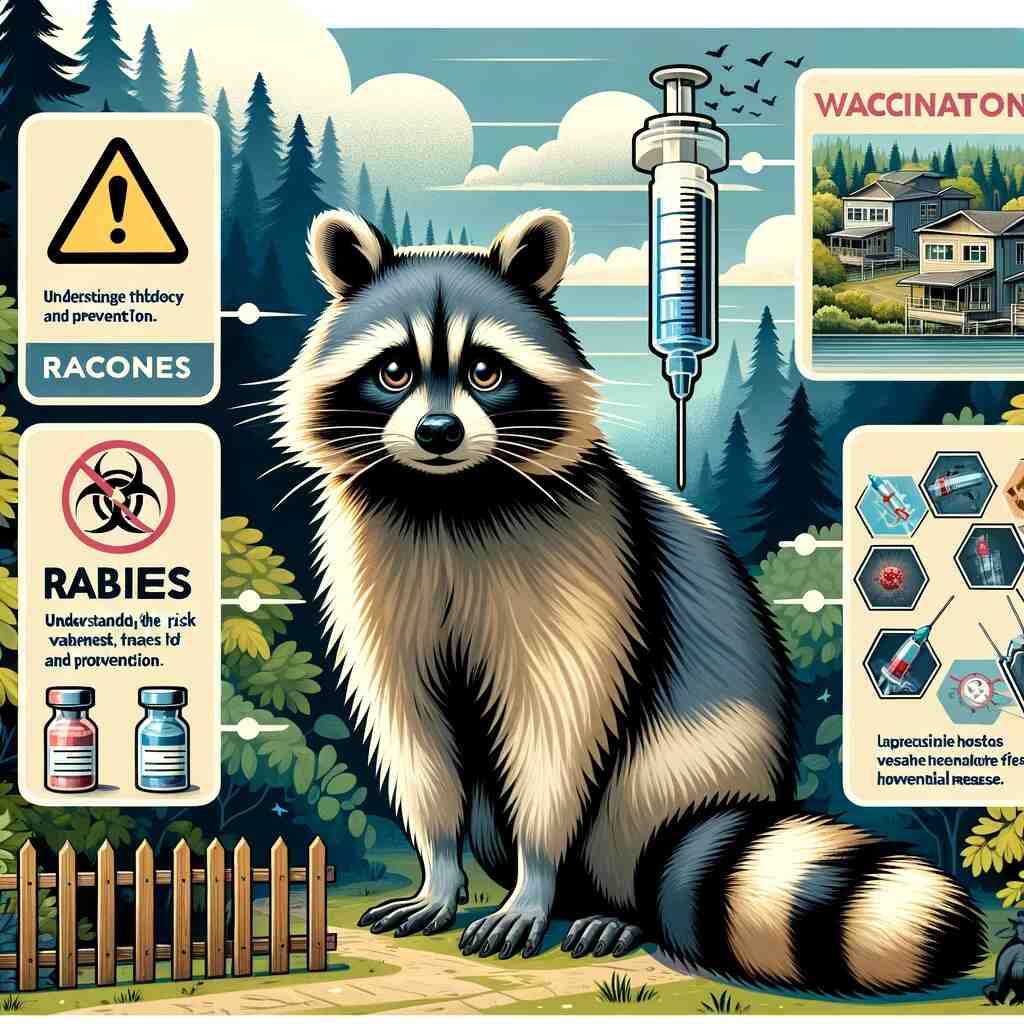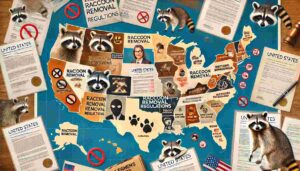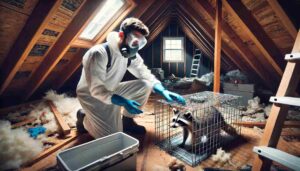Rabies is a deadly viral disease that can affect humans and animals alike, and one of the primary carriers of this disease in North America is the raccoon. This article aims to shed light on the risk of rabies associated with raccoons and provides valuable insights into prevention strategies.
The Raccoon: A Familiar Foe
Raccoons (Procyon lotor) are a common sight in North America. With their distinctive mask-like facial markings and ringed tails, they have earned a place in folklore and urban legends. These nocturnal creatures are highly adaptable and have become a fixture in both rural and urban environments.
Raccoons are known for their cleverness and opportunistic nature. They are omnivorous, which means they eat a wide variety of foods, including fruits, vegetables, insects, small mammals, and even garbage. Their adaptability has allowed them to thrive in human-dominated landscapes, making encounters with raccoons a common occurrence.
While raccoons may seem cute and harmless from a distance, they can pose a serious threat when it comes to rabies transmission.
Rabies: The Deadly Virus
Rabies is a viral disease caused by the rabies virus, a member of the Lyssavirus genus. The virus primarily affects mammals, including humans. Once symptoms appear, rabies is almost always fatal, making it one of the deadliest diseases known to humanity. It attacks the central nervous system, leading to symptoms such as fever, confusion, hallucinations, paralysis, and ultimately death.
Rabies is primarily transmitted through the saliva of an infected animal, typically through bites or scratches. The virus travels along the nervous system to the brain, where it multiplies and then spreads to other organs. It is important to note that rabies is preventable if treated promptly after exposure through post-exposure prophylaxis (PEP), a series of rabies vaccinations.
The Raccoon as a Rabies Vector
Raccoons are considered a rabies vector species in North America, meaning they are known to carry and transmit the virus. This association between raccoons and rabies is a significant concern for public health.
High Rabies Susceptibility
Raccoons are highly susceptible to rabies infection. They can contract the virus through encounters with other rabid animals, such as skunks, foxes, or bats. Once infected, raccoons can become aggressive, disoriented, and exhibit erratic behavior—classic signs of rabies in any animal.
The Role of Bites
One of the most common ways rabies is transmitted is through bites. Raccoons are territorial animals and can be aggressive when defending their territory or young. If a rabid raccoon bites a human or another animal, it can transmit the virus, potentially leading to infection.
Urban Encounters
Raccoons’ adaptability to urban environments means that human encounters with them are not uncommon. Unfortunately, this also increases the risk of rabies exposure. People who feed or handle raccoons, either intentionally or unintentionally, are at a heightened risk of being bitten or scratched.
Prevention: Protecting Yourself and Your Community
Preventing rabies transmission from raccoons requires a combination of public awareness, responsible behavior, and proactive measures. Here are some crucial steps to reduce the risk of rabies exposure:
1. Avoid Contact: The best way to prevent rabies transmission is to avoid contact with raccoons and other wildlife. Do not feed or approach them, and ensure that your pets do not come into contact with potentially rabid animals.
2. Secure Garbage: Raccoons are opportunistic feeders and are attracted to easily accessible food sources, like open garbage cans. Secure your trash containers with tight-fitting lids to discourage raccoons from foraging.
3. Seal Entry Points: Raccoons are skilled climbers and can access attics, basements, and other parts of your home if there are entry points. Seal any potential openings to prevent them from entering.
4. Vaccinate Pets: Ensure that your pets, such as dogs and cats, are up-to-date on their rabies vaccinations. This not only protects them but also reduces the risk of transmission if they encounter a rabid animal.
5. Report Suspected Rabid Animals: If you observe a raccoon or any other wild animal displaying abnormal behavior (aggression, disorientation, etc.), contact your local animal control or wildlife agency immediately. Do not attempt to handle or approach the animal.
6. Post-Exposure Prophylaxis (PEP): If you are bitten or scratched by a raccoon or any other potentially rabid animal, seek medical attention immediately. PEP is highly effective if administered promptly after exposure.
7. Educate Your Community: Raise awareness about the risk of rabies and the importance of responsible behavior around wildlife. Encourage your neighbors and community members to take precautions to prevent encounters with raccoons and other potentially rabid animals.
Legal Considerations
It is essential to be aware of the legal regulations regarding raccoons and wildlife in your area. In some regions, it may be illegal to trap, relocate, or harm raccoons without a permit. Contact your local wildlife agency or animal control office for guidance on dealing with raccoons on your property.
Conclusion
Rabies is a deadly disease that poses a significant risk when associated with raccoons. These adaptable animals, while intriguing and often charismatic, can become carriers of the rabies virus. To protect yourself, your community, and the raccoons themselves, it is crucial to exercise caution and responsible behavior around wildlife.
By avoiding contact, securing garbage, vaccinating pets, and reporting suspected rabid animals, you can help reduce the risk of rabies transmission from raccoons. Educating your community and promoting awareness about the dangers of rabies is also essential in ensuring a safer coexistence with these fascinating creatures.
Remember that rabies is preventable through post-exposure prophylaxis (PEP) if administered promptly after exposure. In the case of any potential rabies exposure, seek immediate medical attention. By working together and taking preventive measures, we can reduce the risk of rabies and protect both human and animal populations from this deadly disease.










